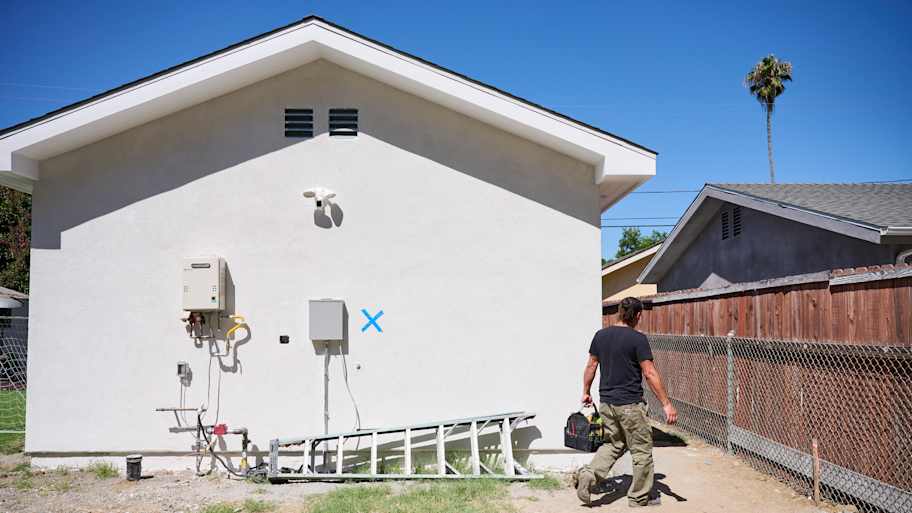Is the Black Wire Positive or Negative? How to Tell Electrical Wires Apart
Are you dealing with a Negative Nelly or a Positive Polly?


Colored sheaths on the wires identify them.
AC power and DC power use different wire colors.
Positive wires in a modern AC outlet setup will likely have black, red, and blue cable sheaths. Negative wires will likely have a white cable sheath.
You can also use a multimeter to test positive and negative wires.
It can be difficult for the average person to determine if a black wire is positive or negative. This is mainly because the black wire’s purpose changes based on the current (alternating or direct), making electrical wiring projects that much more intimidating. However, with a bit of knowledge, you’ll have an easier time pinpointing which wires you’re looking at.
While all electrical jobs carry some risk, you can safely do quite a few basic wiring jobs yourself with the right tools and information under your belt. For example, when you want to install a ceiling fan to stay cooler in the summer, understanding how to tell negative and positive wires apart is one of the most important parts of the task.
You can often distinguish positive and negative wires simply by looking at the color of the wire sheath protecting them. You can also use tools that measure the current going through the wire, but having the base knowledge of when the black wire is positive or negative will give you a safety net to always fall back on.
How to Safely Examine Your Home’s Wiring

Don’t even think about looking at any electrical wiring until you shut down the circuit breaker that feeds power to the wires. Especially as a novice, you should never work on any wiring while there’s still power flowing through it, as you could suffer incredibly damaging or even fatal electric shock.
After you’ve shut off the power, you can unscrew and remove the protective covers on your light socket or wall outlet to see the wires behind them.
Next, use a multimeter to test the outlet or wires. If current is still running through them, you need to check the circuit breaker again. Labeling mix-ups on breaker switches happen more often than you might think, so double-check that things are labeled correctly.
Once you’re certain that the wires are no longer carrying current, you can then touch and inspect them closely.
Important: Always wear electrical gloves when doing any wiring work. Again, don’t attempt any electrical work unless you’re sure you can do it safely. When in doubt, call in a pro.
Is the Black Wire Positive or Negative?

Knowing if the black wire is positive or negative isn’t quite as simple as it might seem. In fact, a black wire can mean entirely different things depending on the circuit you’re looking at.
Typically, if you’re looking at a direct current (DC), the black wire is negative. If you’re looking at an alternating current (AC), the black wire is positive. That’s why it’s so important to determine which type of circuit you’re looking at before diving into any electrical work.
AC reverses the flow of electricity at regular intervals, and it’s utilized in motors, dishwashers, and your home’s outlets. Most home electrical projects will probably utilize AC. DC, on the other hand, has a constant voltage flowing in one direction, and it’s used in phones, laptops, and camera systems (or almost anything that needs to store power in a battery).
What Do the Wire Colors for Outlets or Ceiling Lights Mean?
A modern outlet or light socket in your home typically has anywhere from three to five wires. Older homes might only have two wires.
The positive wires in a modern AC setup would have black, red, and blue cable sheaths. The negative wire would have a white cable sheath. If a ground wire is present, it should have a green cable sheath.
Important: These are the standard cable sheath colors for AC wiring in the United States. Other countries use different color schemes. Research your country’s standard wiring colors before attempting any electrical work.
Identifying Positive and Negative Wires in AC Power
If you have multiple positive wires coming from the wall outlet or light socket, you should connect them in the correct order, outlined below.
Black: The black wire is the primary positive wire (called phase 1). Use it for the main connection to your ceiling fan, light socket, or outlet.
Red: The red wire is the second positive wire (called phase 2). Only connect it to your ceiling fan, light socket, or outlet (if it needs a second positive wire).
Blue: The blue wire is the third positive wire (called phase 3). Only use it after connecting the black and red wires.
As far as your negative wires go, the white wire is a negative wire. You should connect this one to the negative wire in an outlet or ceiling fan after all the positive wires are connected. The green wire should always connect to the grounding screw or wire, which is usually green. Some grounding wire sheaths may be green with yellow stripes.
Important: The white and green wires are not the same thing, and you cannot connect them interchangeably.
Identifying Positive and Negative Wires in DC Power
AC power is the type of power used in your home’s electrical outlets and lights. With AC, electricity can flow in either direction. Alternatively, in DC power, electricity flows in one direction only. DC power is common in devices that run from batteries.
If you encounter wiring from a DC device, such as in solar cells or batteries, don’t forget that the colors of the wire sheaths differ from AC wiring.
Red: The red wire is positive.
Black: The black wire is negative.
White: The white wire is neutral or ground.
Gray: Some DC wiring setups use a gray grounding wire instead of white.
Occasionally, you may not see a red wire. Instead, you may have two black wires, one of which has white stripes. If so, the solid black wire should be positive, and the black and white striped wire should be negative. Use a multimeter to check.
DC wiring and power are different enough from AC wiring and power that even if you have experience replacing lighting in your home, you may want to hire a local electrician to help you with any electrical work involving DC wiring.
Identifying Wires With a Multimeter

Occasionally, you may have wires in your home where the color of the sheath is not easy to discern. If this is the case and you feel like a toddler trying to tell colors apart for the first time, grab a multimeter from your local home improvement store. A multimeter can measure the positive and negative wires for you when the associated circuit breaker has power. It’s smart to use the multimeter to test the wires even when the colors of the cable sheaths are clear, just to be certain.
When you connect the leads on the multimeter to the wire you’re measuring, the multimeter should display a positive number or a negative number. The number represents the voltage reading, and the positive or negative sign corresponds to whether the wire is positive or negative.
Again, don’t work on any live wires, and don’t test your wires without proper safety gear (like rubber electrical gloves). If you’re hesitant about a potential electrical project, stop now and call in an electrician to help.





- Home Generator Repair
- Lamp Repair
- Electric Repair
- Generator Installation
- TV Antenna Services
- Emergency Electricians
- Commercial Electricians
- Attic Fan Installation
- Attic Fan Repair
- Exhaust Fan Installation
- Electric Inspectors
- Subcontractors
- Electrical Construction
- EV Charger Installer
- Chandelier Installation
- Doorbell Installation
- Bathroom Fan Installation
- Ring Installers
- Electrical Panel Upgrade










